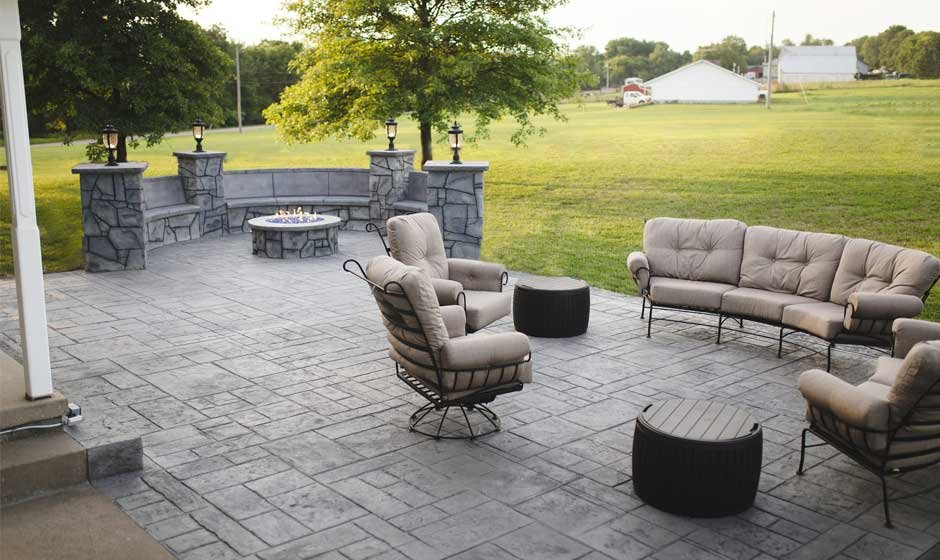For many homeowners, creating an inviting outdoor space involves choosing the right materials. Stamped concrete presents a compelling option for those looking to combine aesthetic appeal with durability. This versatile material allows for a range of designs that can mimic expensive stones or other textures, making it an attractive choice for patios.
Installing a stamped concrete patio can yield significant benefits. It offers a combination of beauty and affordability, which resonates well with those seeking both style and value in their home upgrades. Additionally, the ease of maintenance associated with stamped concrete means that homeowners can spend more time enjoying their outdoor areas rather than maintaining them. However, it’s recommended that you hire a reputable patio contractor to ensure the stability and durability of your outdoor space.
As homeowners weigh their options, understanding both the advantages and potential drawbacks of stamped concrete is crucial. This material not only enhances the visual appeal of a property but also adds long-term value, making it worthy of consideration for anyone looking to elevate their outdoor living experience.
Design Considerations for Stamped Concrete Patios
When selecting stamped concrete for a patio, various design elements come into play. Key factors include patterns, textures, color options, and comparisons to other materials. Each choice significantly influences the final appearance and functionality.
Choosing Patterns and Textures
Selecting the right patterns and textures is crucial for achieving the desired aesthetic. Stamped concrete offers diverse designs, mimicking natural materials such as stone, brick, or wood. Popular options include cobblestone, flagstone, and wood planks.
Homeowners can customize patterns based on their landscape style, whether contemporary or rustic. For example, bold geometric shapes suit modern themes, while softer, more organic designs complement natural surroundings. The texture can enhance slip resistance, making safety a priority in high-traffic areas.
Color Selection and Customization
Color selection adds depth to stamped concrete patios. Options range from earth tones to vibrant hues. Customization allows homeowners to match existing elements in their outdoor space or create a standout feature.
Applying multiple colors through techniques such as integral coloring or staining further enhances aesthetic appeal. Contrast between primary and secondary colors can underline unique patterns and textures. It’s essential to consider how chosen colors will interact with lighting throughout the day, as this impacts visual perception.
Comparing Stamped Concrete to Natural Stone and Pavers
When weighing stamped concrete against materials like natural stone and pavers, several factors emerge. Stamped concrete is often more cost-effective. Basic designs start at approximately $8 per square foot, while complex patterns can reach up to $20.
Natural stone or brick pavers may offer superior durability but come with higher maintenance requirements. The ease of installation with stamped concrete can also reduce overall project costs. Additionally, stamped concrete enables seamless design transitions, limiting the need for joint spaces present in paver installations.
Each material has its pros and cons, but circumstances like budget, desired look, and maintenance preferences should guide decision-making.
Installation and Maintenance of Stamped Concrete
When considering stamped concrete for a patio, understanding the installation processes and ongoing maintenance is crucial. Proper installation affects durability and aesthetics, while regular upkeep ensures the longevity of the investment.
Understanding Installation Processes
The installation of stamped concrete involves several essential steps. First, the ground is prepared, requiring excavation and leveling. Next, concrete is poured and allowed to set briefly before decorative patterns are stamped in, often colored for aesthetic appeal. If you choose a traditional concrete finish, no stamping is needed.
Professional installation typically involves skilled labor to ensure even application of molds and color. DIY enthusiasts may attempt this project but should be mindful that achieving a professional finish can be challenging. Choosing high-quality materials enhances the final appearance and durability, contributing to a patio that withstands wear over time.
Long-Term Upkeep and Repairs
To maintain its appearance and functionality, stamped concrete requires regular upkeep. Routine cleaning is essential; homeowners can use a garden hose or a pressure washer to remove dirt and debris.
Sealing is another critical component of maintenance, as it protects the surface from moisture and staining. It is advisable to perform this every 2-3 years. In addition, any minor cracks that develop should be addressed promptly using appropriate sealing compounds. This proactive approach helps prevent larger issues that may arise due to neglect, contributing to the patio’s longevity.
Cost Analysis: Initial and Ongoing Expenses
The cost of stamped concrete can vary significantly based on factors such as size, design, and installation method. Initial installation costs generally range from $2,949 to $7,223, with high-quality materials pushing the cost upwards of $12,000 for expansive patios.
Ongoing expenses related to maintenance need consideration as well. Regular sealing, cleaning supplies, and potential repair materials contribute to the overall financial outlay. Despite these costs, many homeowners find stamped concrete to be an economical choice in terms of durability and low maintenance requirements, enhancing property resale value.










